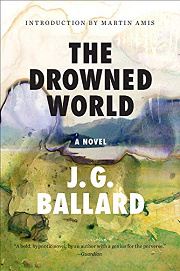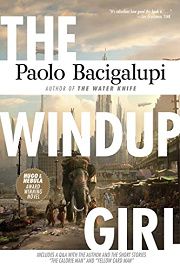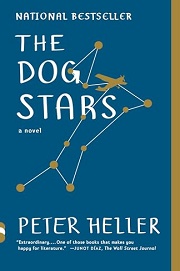Share your thoughts in a quick Shelf Talk!
The Drowned World by J. G. Ballard
In a sun-scorched future where cities drown in tropical lagoons, a scientist navigates flooded ruins and the tidal pull of his own evolving instincts. Lush, hypnotic, and eerily prophetic, The Drowned World explores the line between civilization and the primal depths calling us home.
Have you read this book? Share what you liked (or didn’t), and we’ll use your answers to recommend your next favorite read!
Love The Drowned World but not sure what to read next?
These picks are popular with readers who enjoyed this book. Complete a quick Shelf Talk to get recommendations made just for you! Warning: possible spoilers for The Drowned World below.
In The Drowned World, did you enjoy ...
... the tropical, climate-warped cityscapes and ecological collapse?
The Windup Girl by Paolo Bacigalupi
If the feverish lagoons of Kerans’s flooded London and the sun-blasted decay around Beatrice’s high-rise captivated you, you’ll love how The Windup Girl plunges you into a sweltering, waterlogged Bangkok. Like the drained lagoon Strangman reveals, Bacigalupi’s canals hide predatory new ecologies and ruthless opportunists. You get the same oppressive heat, engineered plagues replacing Ballard’s giant iguanas, and a city whose very biology dictates politics and survival. It carries that hypnotic, end-of-the-world humidity you felt whenever Colonel Riggs’s team pushed deeper into the drowned streets.
... the dreamlike, hallucinatory ecology and disorienting sense of reality?
Annihilation by Jeff VanderMeer
If Kerans’s prehistoric dreams, the languor of the lagoons, and the eerie pull of the sun turned reality porous for you, Annihilation will hit the same nerve. Area X, like the drowned city around the Ritz where Beatrice hides, feels both lush and menacing—alive with inscrutable patterns and a logic that slips through your fingers. As the biologist descends into the Tower (that isn’t a tower), the mood echoes the moments when Kerans abandons Riggs’s orders and drifts toward something older and stranger calling from the heat and the silt.
... the unsettling descent into primal urges and fractured identity?
Ice by Anna Kavan
If you were compelled by Kerans’s inward drift—his surrender to archaic impulses and those feverish, symbolic dreams—Ice offers a similarly psychological journey. Kavan’s unnamed narrator pursues a woman through a world freezing over, with reality shifting as fluidly as Kerans’s sense of self among the lagoons. The chase becomes an obsession, the landscape a mirror of the mind, much like how the blazing sun and reptilian visions refract Kerans’s regression beyond the reach of Riggs’s rational order.
... the close-quarters focus on a small, isolated survivor and their immediate world?
Dog Stars by Peter Heller
If the intimacy of Kerans, Beatrice, and a handful of figures circling each other in the drowned high-rises drew you in, The Dog Stars keeps that tight focus. Hig lives at an airfield with only a dog and a prickly companion, charting small flights over a ruined Colorado the way Kerans drifts by skiff through silent plazas. The stakes are personal and immediate: scavenging, wary encounters, and the fragile hope found in a single voice on the radio—echoing the hush of those private moments before Strangman’s men disturb the water and everything tilts.
... landscapes that act as allegories for inner transformation and entropy?
The Inverted World by Christopher Priest
If you responded to how the drowned city externalizes Kerans’s regression—those solar flares, silted cathedrals, and prehistoric dreams—Inverted World transforms geography into an even starker metaphor. A city must be hauled across shifting terrain to outrun a reality-warping horizon, just as Kerans tries to stay ahead of time’s undertow drawing him south. Priest’s impossible contours and distorted maps feel like Strangman’s drained lagoon: a revelation that remakes the world’s meaning and forces the characters to confront who they are when the ground itself won’t hold.
Unlock your personalized book recommendations! Just take a quick Shelf Talk for The Drowned World by J. G. Ballard. It’s only a few questions and takes less than a minute.





